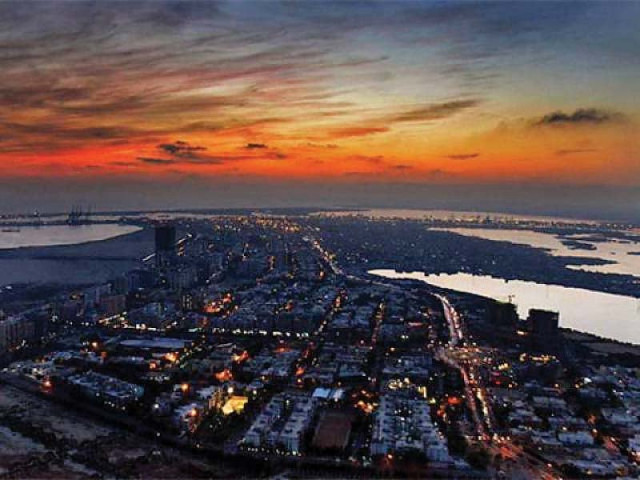
However, the issue is that the worst time has yet to come. The economy is faced with new and bigger challenges in fiscal year 2019.
The economy took off with Gross Domestic Product (GDP) being declared at a decade high level of 5.3% in fiscal 2017. It achieved a 13-year high growth of around 5.7-5.8% in FY18. However, now it is estimated to recede to 4.7-4.8% in FY19.
Economic fundamentals have deteriorated over the previous year and are set to mess up the economy down the road.
“The water crisis may further hamper economic growth in fiscal year 2019,” BMA Capital’s Economist Muhammad Fawad Khan said in a comment to The Express Tribune. As per international organisations, Pakistan is likely to face a major water crisis by 2025. The crisis may slow down agriculture growth this fiscal year. Its share in the economy stands at around one-fifth.
Initial reports have suggested that cotton farmers, mainly in Sindh, have failed to sow seeds at a large part of the targeted area of around 3 million hectares due to water scarcity this summer season.
The economist said FY18 had started on a positive note with GDP expected to grow. However, political uncertainty, due to this being election year, has hampered prospects.
“The optimistic scenario is turning into a more cautious or pessimistic outlook going forward,” he said.
Political uncertainty may persist in the post-election era, as there remains a tendency by the losing political party to begin a blame game. “It [street agitation] depends on who comes into power,” Khan said.
Going to IMF
Given the bleak economic scenario, where the country’s foreign currency reserves have dropped to a critical level of less than two months import cover at $9.66 billion on June 22, 2018; “it is an obvious scenario that Pakistan will enter into the International Monetary Fund’s (IMF) [bailout] programme sometime late first quarter and early second quarter (September-October 2018)”, he said.
The government has set a GDP growth target of 6% for fiscal year 2019. However, “we [BIPL Securities] estimate economic growth at 4.8% in fiscal year 2018-19”, BIPL Securities Economist Jahanzeb Zafar stated the other day. Poor performance on the economic front also suggests that Pakistan may face a crisis in fiscal year 2019 if corrective measures are not taken on time, he said.
“Pakistan has been facing the problem of a current account deficit since last year and in 2018-19 it faces a balance of payments crisis as well as currency weakening … all this suggests a crisis in the making,” he added.
“We expect…11% more currency devaluation in FY19, two percentage points hike in key interest rate to 8.5% by December 2018 and upward adjustment of energy/utility prices to reduce fiscal burden.
“As a result, inflation is likely to average 8.5% in FY19; but current account deficit might scale down,” Insight Securities’ analyst Zeshan Afzal said in a comment to his clients.
FY18 result card
The just-ended fiscal year has seen the rupee depreciate by over 15% to Rs121.49 to the US dollar. The currency remained flat at around Rs105.5 in the first five months (July-November 2017), but weakened massively in three rounds since December 2017.
Speakers urge protection of agro-economy while laying TAPI Gas Pipeline
The drop in the rupee was made to help revive sluggish exports, slow down exorbitant imports and attract higher workers remittances in a bid to narrow down trade and current account deficits. In addition to the depreciation, the government extended export package worth Rs180 billion and imposed additional regulatory duties on imports. The measures slightly pushed up exports, but largely failed to slow down imports.
Import bill hit a historic high of $5.8 billion in May 2018 with a massive recovery in fuel oil prices in international markets and continued import of machinery for the China-Pakistan Economic Corridor (CPEC) projects. Pakistan heavily relies on imported energy, which comes to one-fourth of the total import bill.
Besides, the central bank increased the key interest rate by 75 basis points to 6.5% during the year to deal with the inflationary pressure in the making due to rupee depreciation and high imports.
Current account deficit shot up 43% to $15.96 billion in the first 11 months of the outgoing fiscal year.
The import of goods in the 11 months has reached $50.71 billion, which is much higher than the government’s set target of $48.8 billion for the full-year. While, exports stood at $22.78 billion during the months.
Workers’ remittances have improved 3% to $18.03 billion in the months, the trend suggests it would remain lower than the set target of $20.7 billion for the full-year.
The foreign direct investment dropped 1.3% to $2.47 billion compared to $2.50 billion in the same period last fiscal year.
Independent experts said the country needs $5 billion to pay off debt and make interest payments by December 2018 in addition to the existing foreign current reserves to successfully avert a default-like situation.
Published in The Express Tribune, July 1st, 2018.
Like Business on Facebook, follow @TribuneBiz on Twitter to stay informed and join in the conversation.


















COMMENTS
Comments are moderated and generally will be posted if they are on-topic and not abusive.
For more information, please see our Comments FAQ